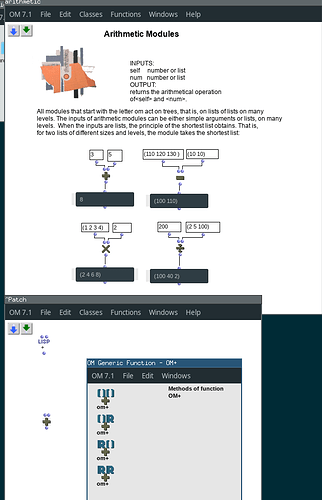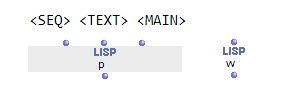Hello again,
Is there any practical difference between the mathematical functions prefaced with “om” and those that can be invoked with just the mathematical symbol?
For example “om*” vs “*”
I see that the LISP function can have any number of inlets added to it that will then calculate whereas the “om” function is fixed.
Additionally, what is the name of the function created when using “p” as the argument in a blank box? It creates the inlets wanting SEQ, TEXT, and MAIN. I cannot seem to find any documentation online for this one.
Best,
Austin


